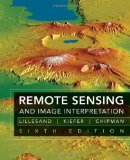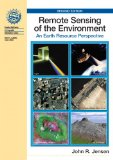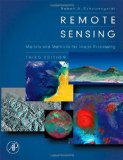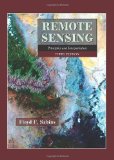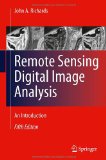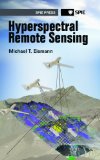Remote sensing
- Airborne Hyperspectral Remote Sensing

- American Society for Photogrammetry & Remote Sensing
- Applications of remote sensing, GIS and GPS in glaciology: a review

- Application of Remote Sensing and GIS

- Ask a remote-sensing-scientist - USGS TerraWeb
- Basics of Remote Sensing from Satellite
- Basic Principles of Remote Sensing

- Center for the Applications of Remote Sensing
- CIESIN's Guide on Remote Sensing
- Corporate GIS Consultants Web Site
- Course on Spatial Analysis
- Danish Center for Remote Sensing (DCRS)
- Fundamentals of Remote Sensing

- Fundamentals of Remote Sensing
 - A Canada Centre for Remote Sensing Tutorial
- A Canada Centre for Remote Sensing Tutorial - GE 510 - Remote Sensing
- Geological Applications of Remote Sensing (GARS)
- Geoscience & Remote Sensing Society
- Getting Started with Remote Sensing
- Groundwater search by remote sensing: A methodological approach

- Helsinki Institute of Technology - Institute of Photogrammetry and Remote Sensing
- High-resolution satellite image segmentation using Hölder exponents

- Hungarian Institute of Geodesy, Cartography and Remote Sensing
- Infocarto - Cartographic Engineering and Remote Sensing
- Introduction to Remote Sensing
 - Dr Robert Sanderson, New Mexico State University
- Dr Robert Sanderson, New Mexico State University - ISPRS - International Society for Photogrammetry and Remote Sensing
- Mapping Sciences and Remote Sensing
- MeCEO - Mediterranean Conference on Earth Observation (Remote Sensing) - Belgrade (Serbia & Montenegro), April 2004
- Mid-America Remote sensing Center (MARC)
- MTA - Remote Sensing Center
- MultiSpectral Scanner Landsat Data: Path/Row Search
- National Satellite Land Remote Sensing Data Archive Page
- Ontario Association of Remote Sensing
- Planetek - A complete Remote Sensing Course On line Free
- PRISM: Platform for Remote Sensing using Smartphones

- Remote Sensing
- Remote Sensing
- Remote Sensing

- Remote Sensing and Image Interpretation & Analysis
- Remote Sensing Applications Consultants
- Remote Sensing Core Curriculum
- Remote sensing in hydrology

- Remote Sensing Principles
- Remote Sensing Research Inc. - provides educational institutions, government agencies, and non-profit corporations with remote sensing technology and services.
- Remote Sensing Reviews
- Remote Sensing The online guides
- Remote Sensing Tutorial
- RSD - Public Use of Remote Sensing Data
- Satellite Imaging
- Satellite Remote Sensing and Archaeology
- SciCentral.com - Satellites & Remote Sensing
- Sea Ice Observations in Polar Regions: Evolution of Technologies in Remote Sensing

- Spectral Imaging for Remote Sensing

- Textural and Rule-based Lithological Classification of Remote Sensing Data, and Geological Mapping in Southwestern Prieska Sub-basin, Transvaal Supergroup, South Africa

- USDA-ARS Hydrology and Remote Sensing Laboratory
- Visualization of Remote Sensing Data
- WHOI Remote Sensing Analysis Group
Universities
- Arizona University - Remote Sensing and Spatial Analysis
- Bradford University Remote Sensing Limited (BURS)
- Brigham Young University's Center for Remote Sensing
- California University, Davis - Center for Spatial Technologies and Remote Sensing (CSTARS)
- Delft University - Photogrammetry and Remote Sensing
- Indian Institute of Technology, Kanpur - Welcome to Remote Sensing Lab
- Minnesota University - Remote Sensing and Geospatial Analysis Laboratory
- Purdue University - Laboratory for Applications of Remote Sensing
- Texas University at Dallas - Remote Sensing Lab
- Washington University - Earth and Planetary Remote Sensing Laboratory
- Wien Technische Universität - Institut für Photogrammetrie und Fernerkundung
Books about remote sensing

